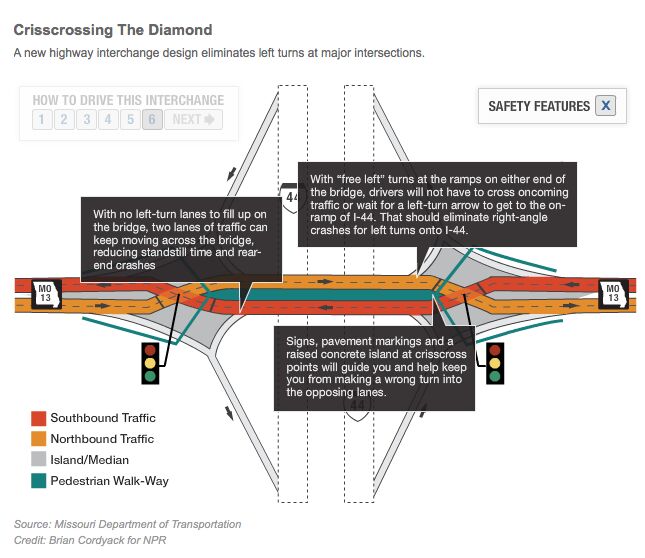3 Views
"Diverging Diamonds": The Solution To Onramp Congestion?
by
Edward Niedermeyer
(IC: employee)
Published: November 24th, 2009
Share
Ever been stuck behind acres of traffic waiting for a left turn signal to enter a freeway? If so, you know it’s one of the more annoying traffic scenarios out there. But a crazy scheme called “diverging diamonds” might just be the fix. NPR has a widget that makes it a lot easier to understand, as well as this memorable response:
Some folks say, ‘It’s crazy. Why did they put it in? Wrecks gonna happen. Why did they do that to us?’
[Hat Tip: Richard Chen]
Edward Niedermeyer
More by Edward Niedermeyer
Published November 24th, 2009 5:07 PM


































Comments
Join the conversation
The only issue that I see is that you will have traffic slowing and exiting from the left lane that is, in theory, the high speed lane. I know that there are a few left-lane exits out there in interstatedom, but in my area they are rare. Also, it looks like the folks exiting have a very sharp turn to make, and an immediate merging as those leaving the highway from opposite directions begin to share the same exit ramp. It would be interesting to see some traffic studies which would tell us if these are really problems.
Not entirely convinced - you are still sitting at 2 lights to cross the bridge. Two things that would help - make the intersections as close to 90 degrees as possible (like Highway27 said) and make the median on the bridge opaque, to lessen the perception that you are on the "wrong" side of the road - more like a narrow one-way bridge.
With all due respect to the traffic engineers out there, most of the changes I've seen made on my local streets don't seem to fix anything. The above proposal, as pointed out, makes the through traffic stop twice, vice the turning traffic, and replaces T-bone collisions with head-on collisions. Yes, it saves real-estate, but only if you are building a brand new interchange. To take an existing interchange and replace it with one of these would certainly cost a lot of money. Would it be worth the expense? Who makes that kind of decision, and what factors into the decision? Recently they widened my local freeway on-ramp (westbound to southbound) from 1 to 2 lanes. Did it fix the morning traffic problem? No, because the bottleneck is on the single lane road that is residential on my side of the freeway, but commercial once it crosses the freeway and widens into three lanes. The back up happens because of all the people getting off the freeway from both directions and heading west. If I can figure that out, why can't the engineers? What am I missing? On the other hand, a few years ago at the same intersection they widened the freeway offramp (northbound to eastbound) from 1 to 2 right turn lanes. This seems to have helped a lot in reducing the back up onto the freeway itself, but of course doesn't do anything to help the traffic on the road as I try to get home...
This could be a significant improvement for many interchanges. The cloverleaf sets up a conflicting movement where the exiting traffic must merge with the entering traffic in a short distance. It's also relatively expensive, using quite a bit of real estate as well as a big structure. Yes, there are two traffic lights in the crisscrossed diamond, but they don't have a phase for left turns, and the two lights could be coordinated so that you'd never (well, hardly ever) have to wait for more than one of them.